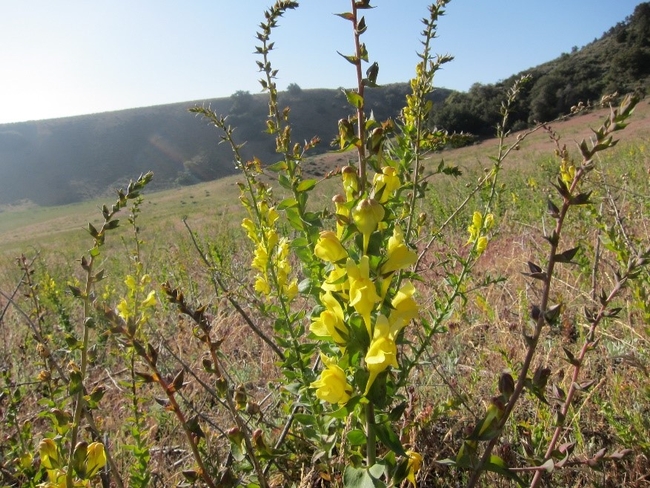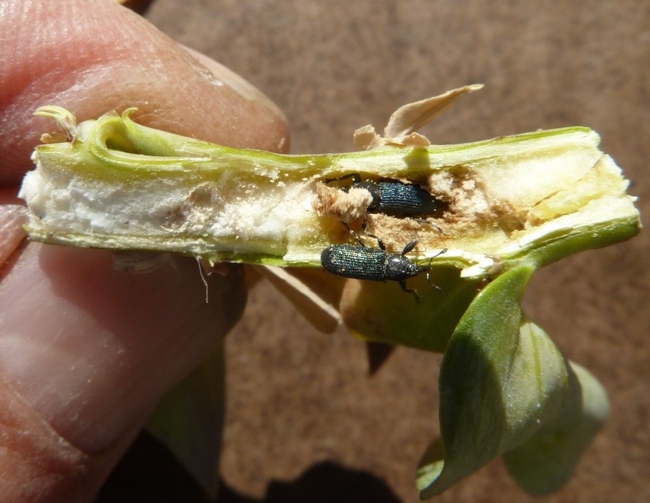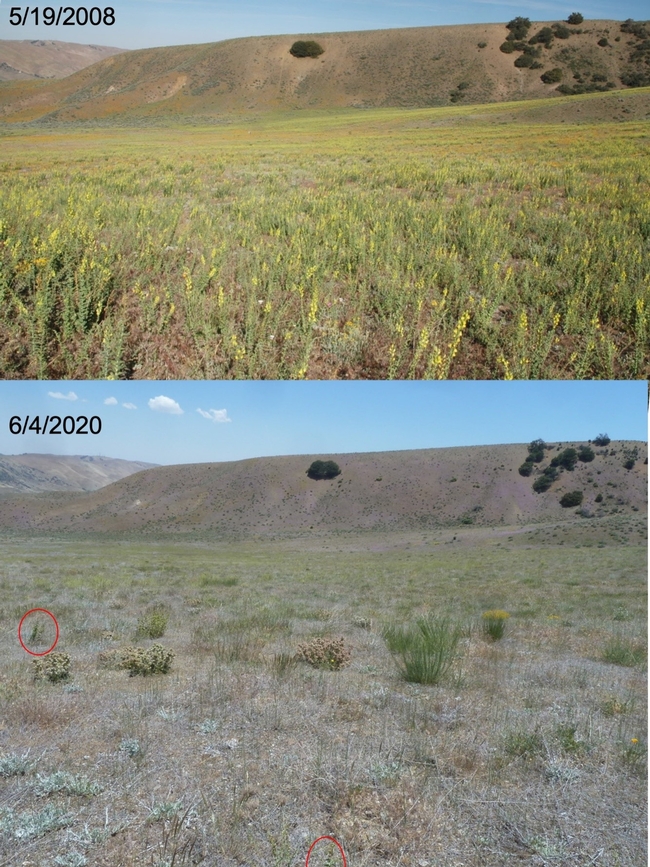Mike Pitcairn is with the California Dept. of Food & Agriculture (mike.pitcairn@cdfa.ca.gov). Lincoln Smith (link.smith@usda.gov) and Patrick Moran (patrick.moran@usda.gov) are with USDA Agricultural Research Service.


In 2008, over 1,000 adult M. janthiniformis were released at the HVSVRA to provide biological control of Dalmatian toadflax. The weevils quickly established at three release points and their numbers increased exponentially. In four years, 100% of stems within 15 meters of each release location were infested, and weevils were found over 550 meters away from their release point. Unfortunately, the Grand Fire in May 2013 burned through the toadflax population at the HVSVRA, destroying the above ground vegetation, killing any weevils remaining in the stems and destroyed potential oviposition sites for any adults that may have survived. The toadflax resprouted later that same year from perennial roots and most plants survived the fire.
Based on the encouraging results of the weevils establishing and increasing prior to Grand Fire, over 1,000 adult M. janthiniformis were released in April and June 2014. Both vegetation and weevil abundance were monitored annual from 2014 through 2019. Vegetation was monitored by estimating plant cover along permanent transects. Weevil abundance was monitored by collecting stems in late autumn or spring and dissecting them under a microscope in our laboratory and counting all immature and adult weevils.
The stem weevil re-established at three release sites. By 2017 100% of stems were attacked at five of six monitoring sites (one site was 71.4%), including three sites at which they were not released. Vegetation cover of Dalmatian toadflax decreased from 41% in 2015 to 7% in 2017 and to less than 1% cover (or trace levels) by 2019, a decrease of 99% from peak levels (Figure 3).
Concurrently, the cover of annual grasses increased consistently by 2018 (to 73% cover) but decreased in 2019 (37%). Annual forbs and annual grasses were generally codominant. Perennial grass cover was less than other vegetation classes but increased from 5% in 2014 to 16% in 2019. Perennial forbs (2.4%) and shrubs (0.4%) showed little change over time.
Weed control can take many years, even decades, because the plants can return through germination of seed from the seed bank. As a result, successful reduction of a target weed is not observed until the seed bank is exhausted. At the HVSVRA in southern California, Dalmatian toadflax cover decreased by 99% in five years following release of the stem weevil which is a fairly short time period for weed biocontrol projects.
For additional information:
Smith, L., D.M. Woods, M.I. Wibawa, V. Popescu, P.J. Moran, B. Villegas, M.J. Pitcairn and C. Hon. 2021. Release and establishment of the weevil Mecinus janthiniformis for biological control of Dalmatian toadflax in southern California. Biological Control. 104633.115. DOI 10.1016/j.biocontrol.2021
